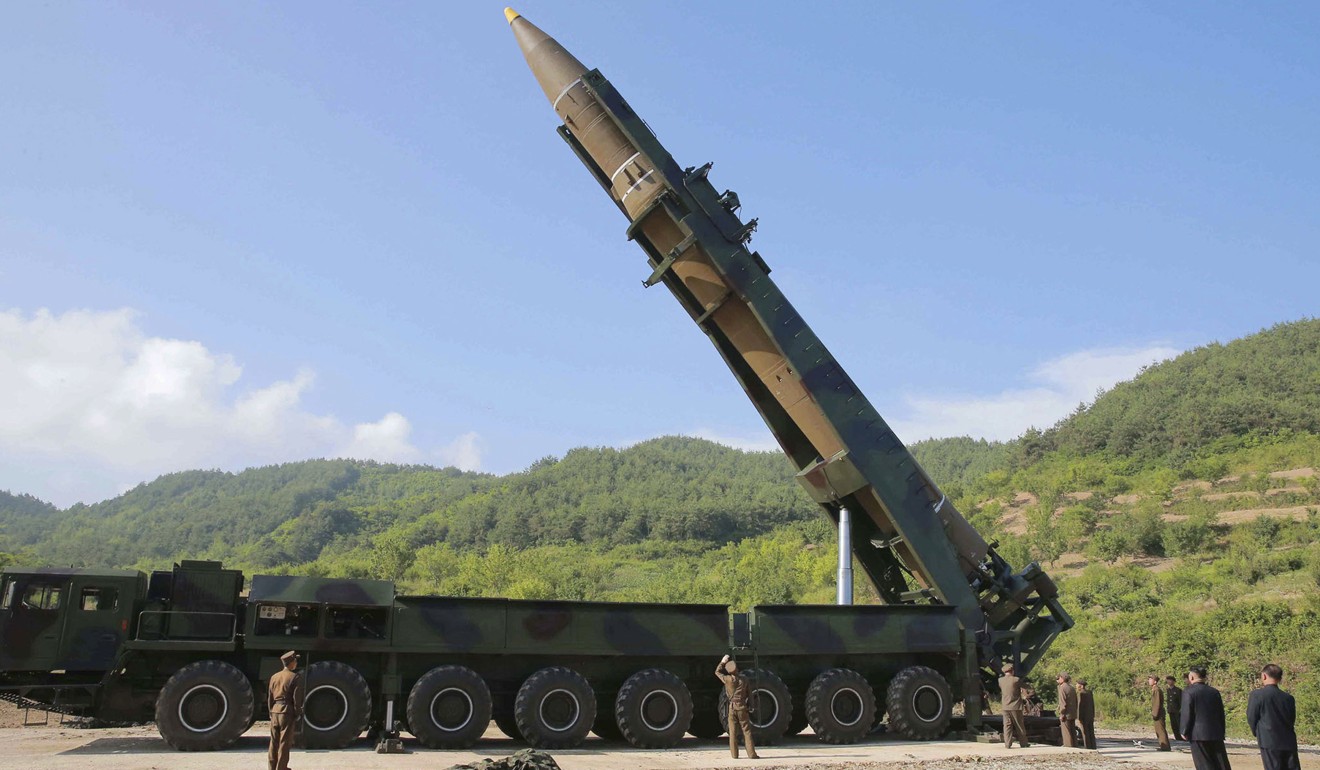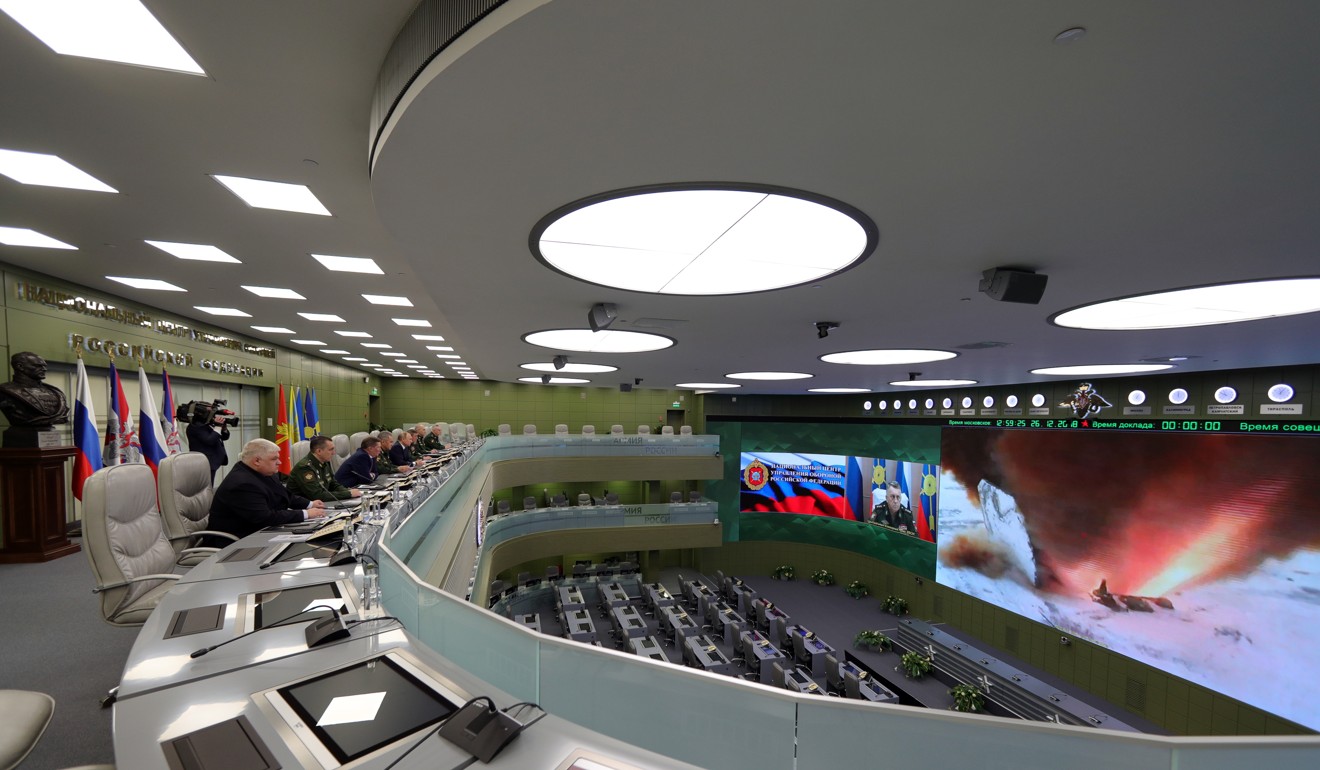
Donald Trump vows US will develop space-based missile defence, as Pentagon eyes Chinese hypersonic tech with concern
- The Pentagon’s new missile defence review finds that a space-based system is needed to thwart threats from North Korea, Iran, China, Russia
- Trump said the US ‘will now adjust its posture’ to defend against hypersonic missiles
Declaring that space is the new military domain, US President Donald Trump on Thursday vowed the US will develop an unrivalled missile defence system to protect against advanced hypersonic and cruise missile threats from competitors and adversaries.
In a speech at the Pentagon, Trump said that the US would do what it takes “to ensure that we can detect and destroy any missile launched against the United States anywhere, any time, any place.”
Trump did not mention Russia, China or North Korea in his roughly 20-minute speech.
But the Pentagon’s new strategy makes clear that its plan for a more aggressive space-based missile defence system is aimed at protecting against existing threats from North Korea and Iran and countering advanced weapon systems such as the hypersonic missiles being developed by China and Russia.
“We will protect the American people from all types of missile attacks,” Trump said. “In the past, the United States lacked a comprehensive strategy for missile defence that extended beyond ballistic missiles.
“Under our plan, that will change. The US will now adjust its posture to also defend against any missile strikes including cruise and hypersonic missiles.”
The new review, the first since 2010, concludes that to adequately protect America, the Pentagon must expand defence technologies in space and use those systems to more quickly detect, track and ultimately defeat incoming missiles.

Acting Defence Secretary Patrick Shanahan, who also spoke, said that competitor nations such as Russia and China are aggressively pursuing new missiles that are harder to see, harder to track and harder to defeat.
“America's competitors, including China and Russia are increasing their existing missile system capabilities, adding new and sophisticated missiles to their arsenals, including hypersonic missiles and advanced cruise missiles,” Shanahan said.
The two countries are “integrating these more effectively into their political intimidation, anti-access and area-denial efforts”, he said.
Anti-access and area-denial is a strategy used to prevent an adversary from occupying or traversing an area of land, sea or air.
Some Chinese military tech surpasses US, Pentagon admits, citing hypersonic weapons
Michael Griffin, under-secretary of defense for research and engineering, said at a Pentagon press conference after Trump’s speech that China’s hypersonic missile systems pose “strategic impact” to US forces.
Although those systems are technical in nature and non-nuclear, Griffin said, their anti-access and area-denial capability could put US forces at risk.
John Rood, under-secretary of defense for policy, who also spoke at the Pentagon press conference, rejected the notion that the US was engaging in an “arms race” with Russia and China.
“We disagree with the characterisation,” said Rood. “By creating systems that shoot down the missiles that fired at you,” Rood retorted, “this is in some way some form of provocative behaviour?” “I just don’t think it’s accurate.”
Specifically, the US is looking to put a layer of sensors in space to more quickly detect enemy missiles when they are launched, according to a senior administration official, who briefed reporters on Wednesday.
The US regards space as a critical area for advanced, next-generation capabilities to stay ahead of the threats, said the official, who spoke on condition of anonymity to disclose details of the review before it was released.
The administration also plans to study the idea of basing interceptors in space, so that the US can strike incoming enemy missiles during the first minutes of flight when the booster engines are still burning.
Recognising the potential concerns surrounding any perceived weaponisation of space, the strategy pushes for studies. No testing is mandated, and no final decisions have been made.
Congress, which ordered the review, has already directed the Pentagon to push harder on this “boost-phase” approach, but officials want to study the feasibility of the idea and explore ways it could be done.
The Chinese military’s five biggest leaps forward in modern weapon systems
The new strategy is aimed at better defending the US against potential adversaries, such as Russia and China, who have been developing and fielding a much more expansive range of advanced offensive missiles that could threaten America and its allies. The threat is not only coming from traditional cruise and ballistic missiles, but also from hypersonic weapons.
China has also alarmed the Pentagon with advances in super-fast hypersonic technology that could allow Beijing to field missiles that are far harder to detect.
In a report earlier this week that singled out the hypersonic threat, the Pentagon said that China’s military was “on the verge of fielding some of the most modern weapon systems in the world.”
“In some areas, it already leads the world,” the report said.

Russian President Vladimir Putin has also unveiled new strategic weapons that he claims can’t be intercepted. One is a hypersonic glide vehicle, which could fly 20 times faster than the speed of sound and make sharp manoeuvres to avoid detection by missile defence systems.
“Developments in hypersonic propulsion will revolutionise warfare by providing the ability to strike targets more quickly, at greater distances, and with greater firepower,” Lieutenant General Robert Ashley, director of the Defence Intelligence Agency, told Congress last year.
“China is also developing increasingly sophisticated ballistic missile warheads and hypersonic glide vehicles in an attempt to counter ballistic missile defence systems.”
China makes ‘big progress’ on nuclear strike range with new submarine-launched missile
Current US missile defence weapons are based on land and aboard ships. Trump and Vice-President Mike Pence have both emphasised space-based capabilities as the next step of missile defence.
Senior administration officials earlier signalled their interest in developing and deploying more effective means of detecting and tracking missiles with an array of satellites in space that could, for example, use advanced sensors to follow the full path of a hostile missile so that an anti-missile weapon could be directed into its flight path.
Any expansion of the scope and cost of missile defences would compete with other defence priorities, including the billions of extra dollars the Trump administration has committed to spending on a new generation of nuclear weapons.
An expansion also would have important implications for American diplomacy, given long-standing Russian hostility to even the most rudimentary US missile defences and China’s worry that longer-range US missile defences in Asia could undermine its national security.
Asked about the implications of the new strategy for Trump’s efforts to improve relations with Russia and strike better trade relations with China, the administration official said that the US capabilities are purely defensive and that the US has been very candid with Moscow and Beijing about its missile defence posture.

The release of the strategy was postponed last year for unexplained reasons, though it came as Trump was trying to persuade North Korea to give up its nuclear weapons.
The strategy singles out North Korea as a continuing and “extraordinary threat”, seven months after Trump declared the threat posed by Pyongyang had been eliminated.
Trump did not mention the North Korean missile threat in his remarks at the Pentagon. But Shanahan said that North Korea’s missiles remain a “significant concern”.
The document used stronger language.

“While a possible new avenue to peace now exists with North Korea, it continues to pose an extraordinary threat and the United States must remain vigilant,” the report said.
While the US continues to pursue peace with North Korea, Pyongyang has previously threatened nuclear attacks against the US and its allies and has worked to improve its ballistic missile technology. It is still considered a serious threat to America.
But at the Pentagon press conference, Rood said the US missile defence system was already sound.
“[The system] that we have put in place to protect the US and intend to make even more robust, as directed by the missile defence review, will be very effective and is effective against North Korea’s long range missiles that can reach the US,” Rood said.
Iran, meanwhile, has continued to develop more sophisticated ballistic missiles, increasing their numbers and their capabilities.
Additional reporting by Reuters


